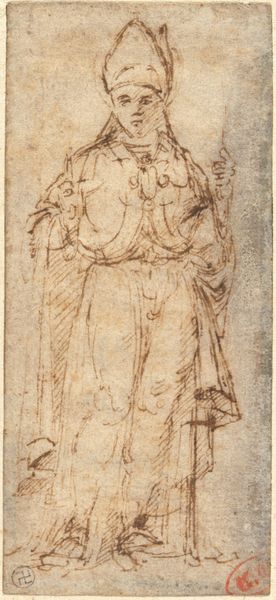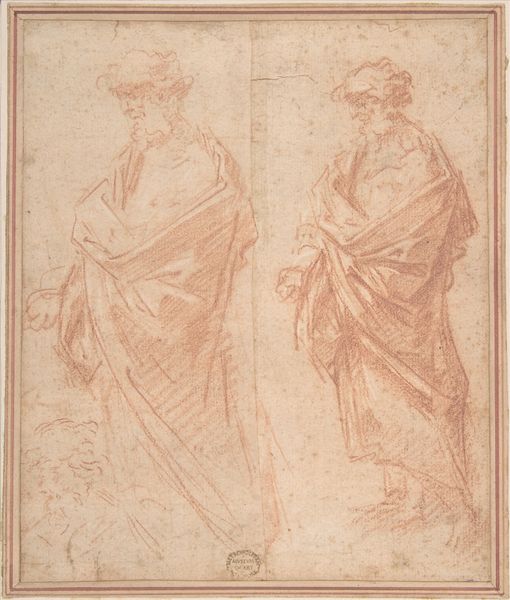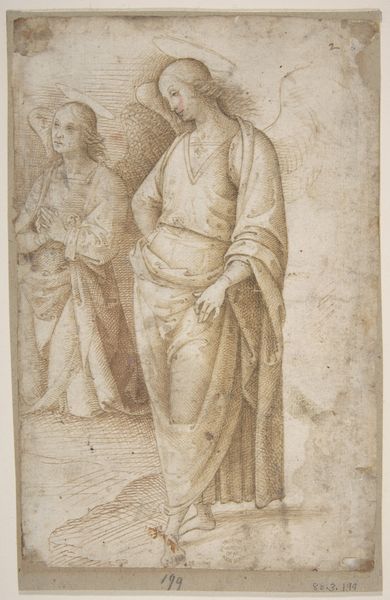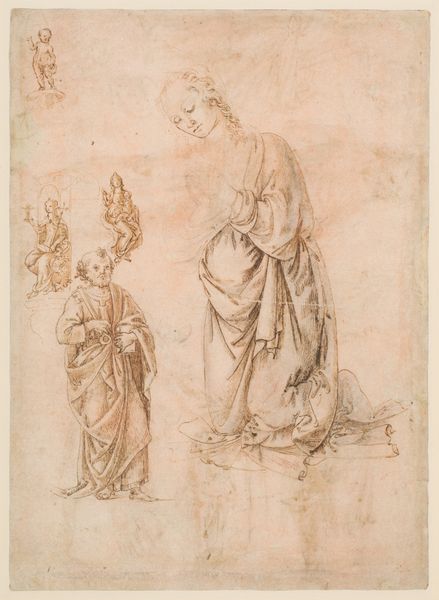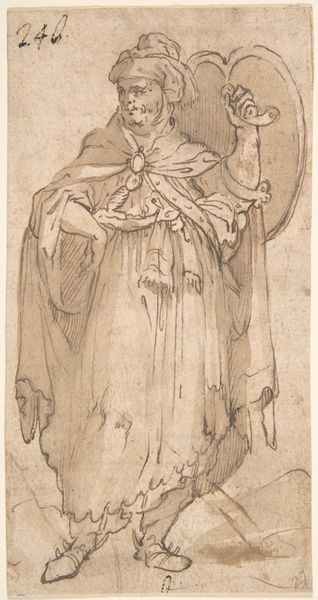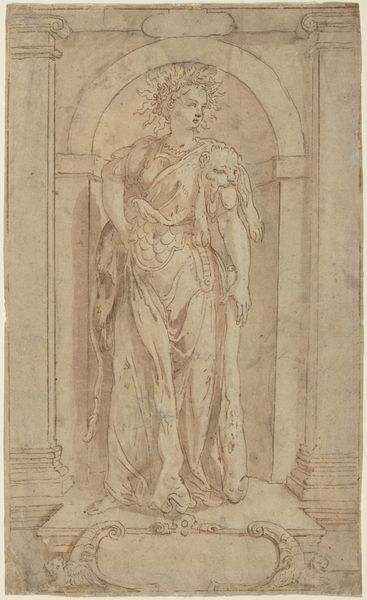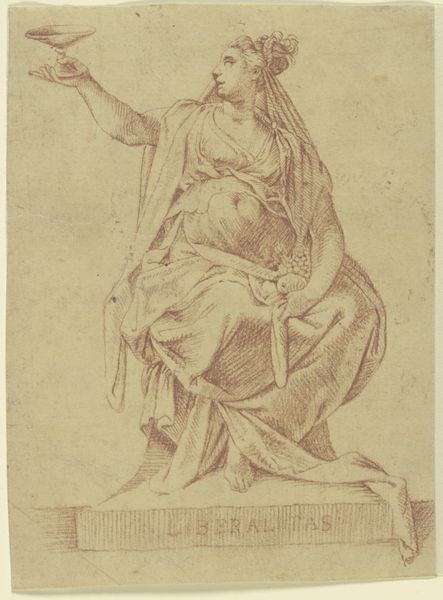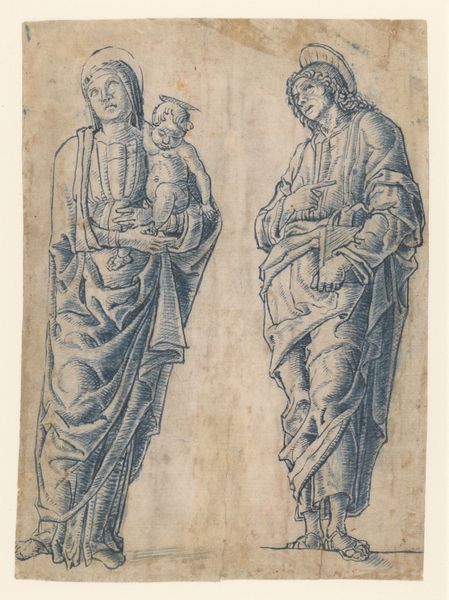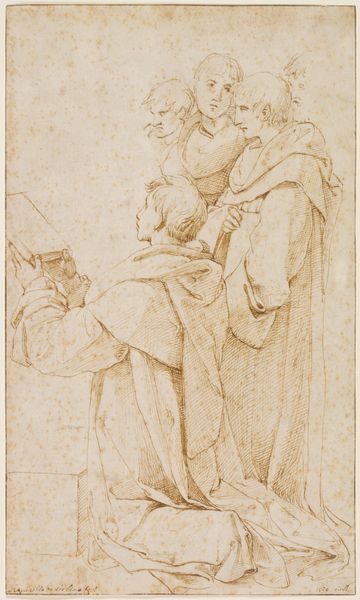
Saint Lucy and a Saint (recto); Alexander the Great in Profile (verso) 1500 - 1512
0:00
0:00
drawing, print, paper, ink, graphite, pen
#
portrait
#
drawing
# print
#
charcoal drawing
#
figuration
#
paper
#
ink
#
graphite
#
pen
#
history-painting
#
italian-renaissance
Dimensions: 234 × 279 mm
Copyright: Public Domain
Editor: Here we have a drawing entitled "Saint Lucy and a Saint (recto); Alexander the Great in Profile (verso)" created by Agnolo del Mazziere sometime between 1500 and 1512. It looks like the artist used pen, ink, graphite, and charcoal on paper. I'm immediately struck by the delicate linework, but also how unfinished it feels. What elements stand out to you? Curator: The use of line is indeed the primary vehicle for conveying form and texture here. Notice how the varying densities of the cross-hatching create areas of shadow and volume, giving a sculptural quality to the figures despite the overall flatness of the picture plane. What does the structure of these lines suggest to you? Editor: Well, the repeated strokes seem to emphasize the drapery and create a sense of movement, though the faces are much less detailed and feel almost ghostly. Curator: Precisely. The artist's choices concerning line weight and density create a hierarchy of importance. The robust strokes used for the garments create a tangible sense of weight, anchoring the figures. Consider how this contrasts with the almost ethereal treatment of the faces. The lines define edges but leave the features understated, prompting the viewer to contemplate the subjects’ inner lives through pose and gesture rather than precise likeness. How does this compare to other Renaissance drawings you have studied? Editor: Most of the finished Renaissance drawings I've seen focus on detailed rendering. This feels much more like a preliminary sketch exploring form. Curator: Exactly! We might think of this drawing as a moment of becoming, the nascent form of something yet to be fully realized. Editor: It's amazing how much you can interpret simply by focusing on the formal elements. Curator: Indeed, by carefully considering the artist’s structural and material choices, we can unearth considerable meaning.
Comments
No comments
Be the first to comment and join the conversation on the ultimate creative platform.
